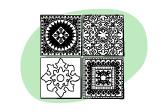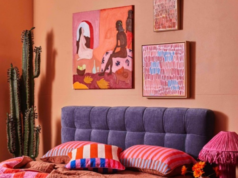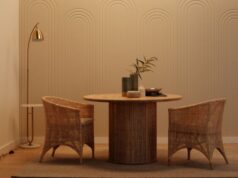
Tiles feature in almost every home, and are particularly common in bathrooms and kitchens. Tiles are a strong design feature.
What are tiles?
Tiles are a form of furnishing that can be used on interior walls, ceilings and floors. Tiles can be made from almost any hard substance, and many soft materials too. Some examples of hard tiles include marble, clay, slate, metal, ceramic, stone or glass. In contrast, soft tiles can be made out of wool, cork, recycled paper and perlite. Tiles can be both functional and decorative and are available in many styles to suit all budgets and tastes.

Why are tiles used?
One of the most common uses for interior tiles is in wet rooms such as bathrooms, laundries and kitchens, where tiles are often applied to floors and walls to protect them from moisture. Some materials (such as ceramic and porcelain) are already water resistant, while other types of tile may need to be sealed. Alternatives to tiles in kitchens and bathrooms include glass and metal.
Another use for tiles is to help with acoustics and soundproofing. These types of tiles are usually quite large and can be used to line walls as well as ceilings in music rooms and home theatres. Tiles are also highly decorative and can be used to create feature walls or to disguise damaged or ugly interiors.
How are tiles installed?
The installation of tiles requires a clean, dry surface that is as flat as possible. Typically, work begins at the centre of the surface. The tiles are dry fitted to ensure that the pattern and layout is suitable. If tiling a wall, masking tape is used to keep the tiles in place while dry fitting, while the ceiling tile layout can be traced with a pencil. Once the desired look is achieved, the start of the grid is marked out with pencil. Either mortar or tile adhesive can be used to fix the tiles into place. If mortar is chosen, only small batches should be mixed at a time so that it doesn’t dry out. The mortar or adhesive is then applied to a notched trowel and spread on the wall. Again, small amounts are better as you don’t want the mortar to dry before the tiles can be attached.
Are tiles easy to maintain?
Hard tiles are quite brittle and can crack and break quite easily. Ensure you keep some extra tiles in case you need to replace some. Soft tiles may need their adhesive reapplied occasionally. They are also likely to trap dirt and dust more than hard wall and ceiling finishes.
|
Advantages
|
Disadvantages
|





